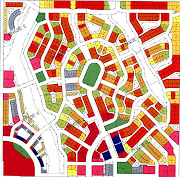More In-Touch but Less Connected
Click here to refresh: http://www.newherbanism.blogspot.com/
The next time you are driving look at the number of people on their cell phones. The next time you are at a Starbucks, or a Panera Bread or a Borders café look at the number of people on their computers. We are more in-touch than ever before, but paradoxically, we are increasingly isolated.Lynn Smith-Lovin is a Duke University Sociologist and coauthor of a study titled “Social Isolation in America.” The study is a replica of one done 20 years ago. In only two decades, from 1985 to 2004, the number of people who have no one to talk to has doubled. And the number of confidants of the average American has gone down from three to two.. One quarter reported that they had nobody o talk to, and another quarter were only one person away from nobody.
People did report that that they were closer to their families. Husbands and wives and parents and their adult children may be closer. Our circles seem to have tightened and shrunk while going nuclear and familial. The greatest loss has been in neighbors and friends who will provide help, support, advice and connections to the wider world.
It's become easier to keep extensive relationships over time and distance by cell phone and email, but harder to build the deep ones in our backyards. In the virtual neighborhood, how many have substituted e-mail for intimacy, contacts for confidants, and phone or Facebook for face to face?
We may be six degrees of separation from any other person in the world and one or two people away from loneliness. Who can we talk to about ``important matters"? Who can we count on? As we search for tools to repair this frayed safety net, Americans can take poor, paradoxical comfort from the fact that if they are feeling isolated, they are not alone.
The good news is that the new traditional neighborhood may be one of those tools to repair the disconnectedness of our times. The principles of TND design put people together and help create conditions where community and connectedness can thrive.
Source: Adapted from the Boston Globe, June 30, 2006



1 comment:
It's sad that this is so true. Now that I'm 33 (obviously a very old and wise 33) I realize how unusual it is to really have 2 or 3 incredible friends. It seems that the pattern for many women is to abandon their friends in exchange for spending all their time with their husband and children. Life is busy and friends take time. Too late many people realize that one cannot replace the other. Maybe a neighborhood like this could actually make a difference in the attitude and value placed on real community.
Post a Comment